Show us your MOW collection
12


12
|
This post was updated on .
Happy Holidays all! Like most model railroad enthusiasts, I have too many locos and MOW equipment (if that’s actually possible =). I would love to see what others have in their collections. Here is what I have built and collected, over the years. All are my work except the 080 and 068, which are absolutely beautiful models I picked up on eBay. If anyone knows who built them I would love to know.
  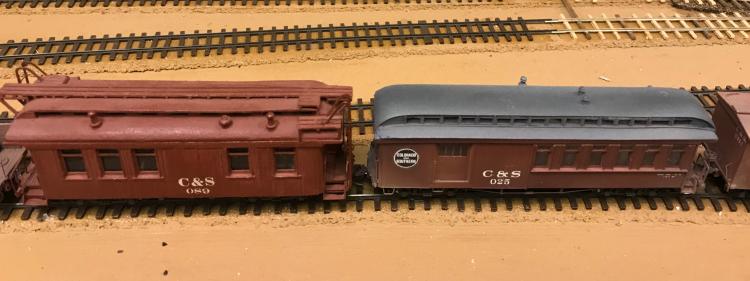 
|
Re: Show us your MOW collection
|
Dan Windolph had an article on building the derrick in Bogies & Loop.That is an excellent model collection.
|
Re: Show us your MOW collection
|
Got a non-model question.When did the South Park first start using flangers?
|
|
Nice Derrick.
I don't have many but here are the three I have 068, 070 and 0103 all built by me. Ken Martin 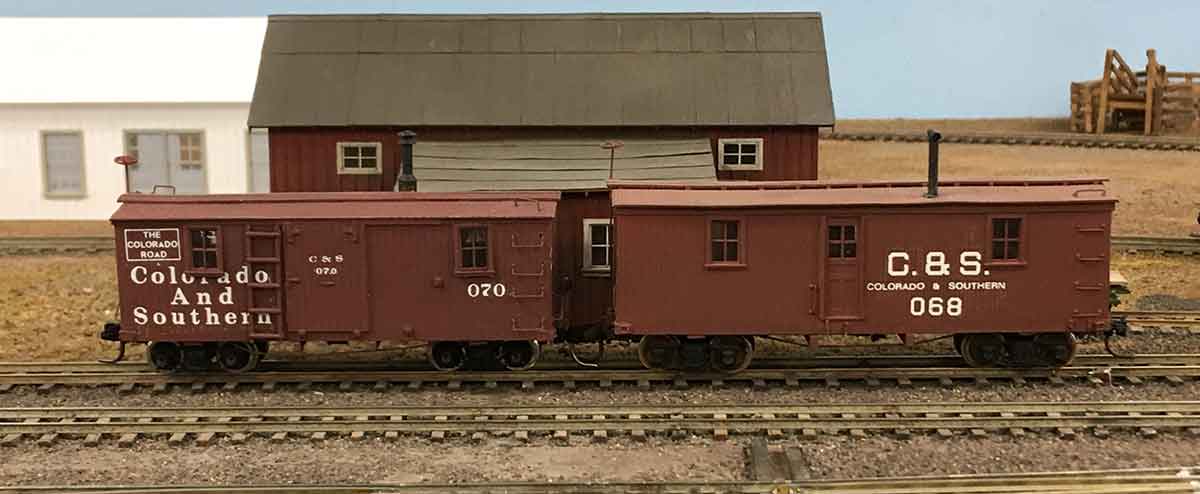  |
|
That is some really beautiful work Ken!
|
|
I’m still unpacking models, so I apologize for placing pics in multiple post, but here Are my cinder cars and Rotary 99200. The rotary is the most elaborate kit bashing and scratch building effort I have ever taken on. With my old man eyes would never do one like it today. I built the tender wrapper from card stock and styrene and the whole model is super-detailed with well over 500 detail parts. It spends most of its time next to the Como Roundhouse, but it was fun to pose it on the new palisade.
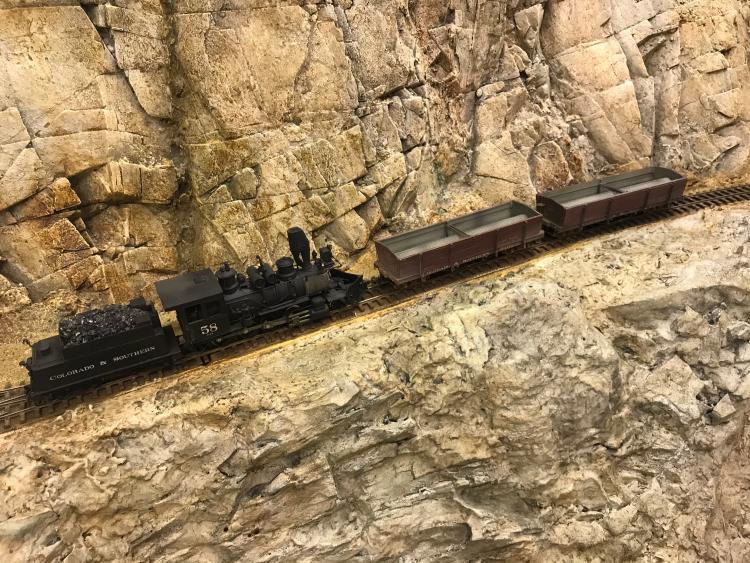 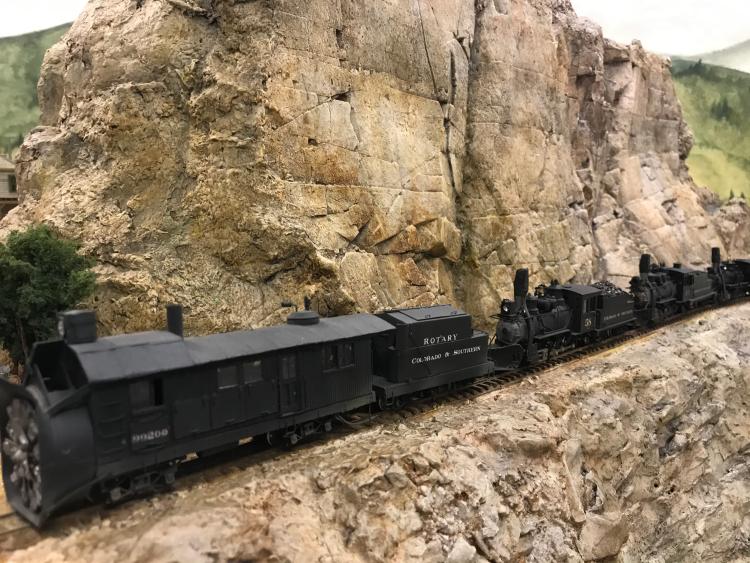 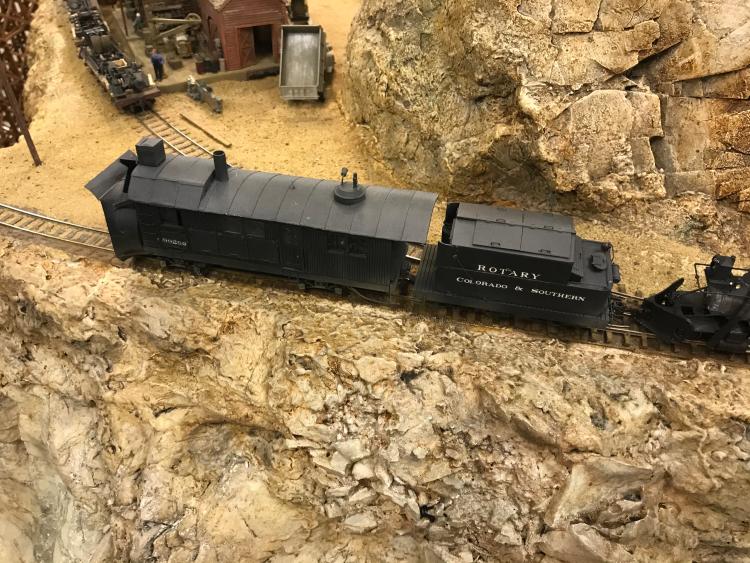 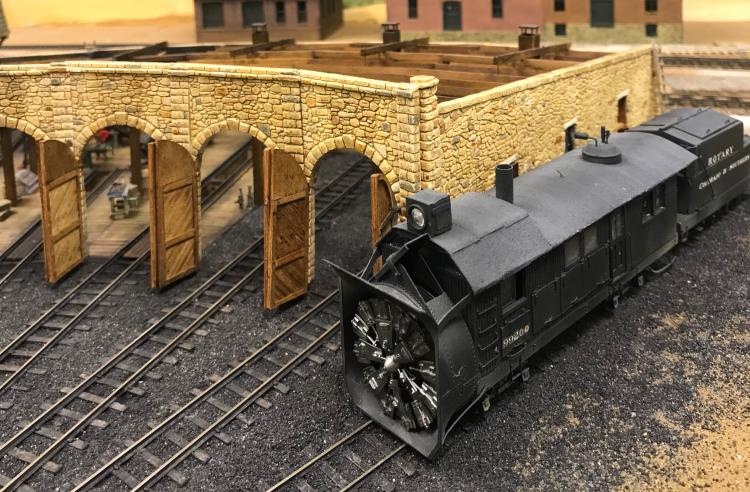
|
|
In reply to this post by Robert McFarland
Gee, I'd say soon after the first heavy snowfall 
UpSideDownC
in New Zealand |
|
In reply to this post by Don Pacetti
Not C&S, but this flanger did appear at the roundhouse a while back. I guess the D&RG fellas must have left it here after clearing the line up the hill and forgot about it.
 This is a PBL model imported about 10 years back. I like the look of MOW gear, but prefer gear that can operate and not be a roundhouse princess. Still looking to build a couple water service cars and some cinder cars!
Keith Hayes
Leadville in Sn3 |
|
Administrator
|
In reply to this post by Don Pacetti
Hi, Don, very nice collection.
I currently have only two active MOW pieces, although eventually I will complete a side dump gon that I've started. Flanger #015 was built a few years back using Durango Press and San Juan parts. I had previously built a #013 which was sort of freelanced from a DP kit back in the 80's. But I'd always thought someday I would build a pretty good #015, and eventually it will be completed when San Juan produces the correct ACF trucks. But we are fine using these trucks as we keep the line passable during Winter in the High Country. Extra #73-#75 East, 10 cars, and a flanger. 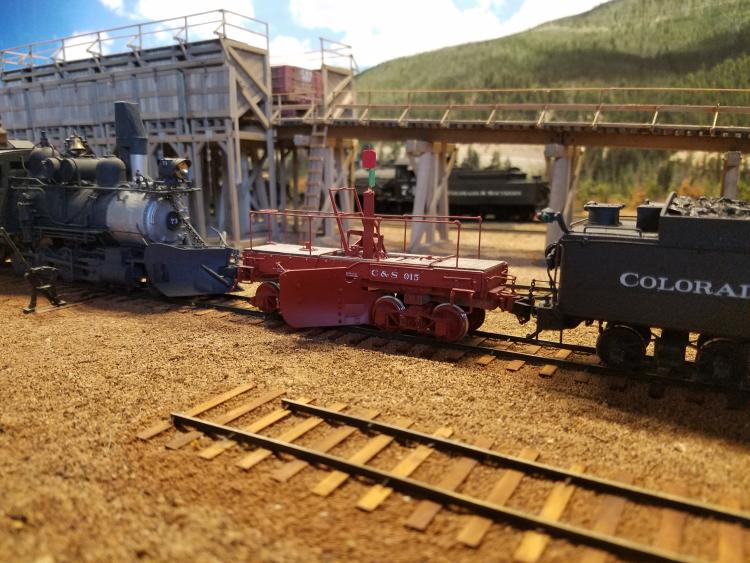 Rotary #99200 is as scarce as #537. Nice job on yours! Here are a couple pictures of mine, built in 1986. Durango Press RGS Rotary parts, PSC tender wrapper and countless castings, including a C-16 boiler. 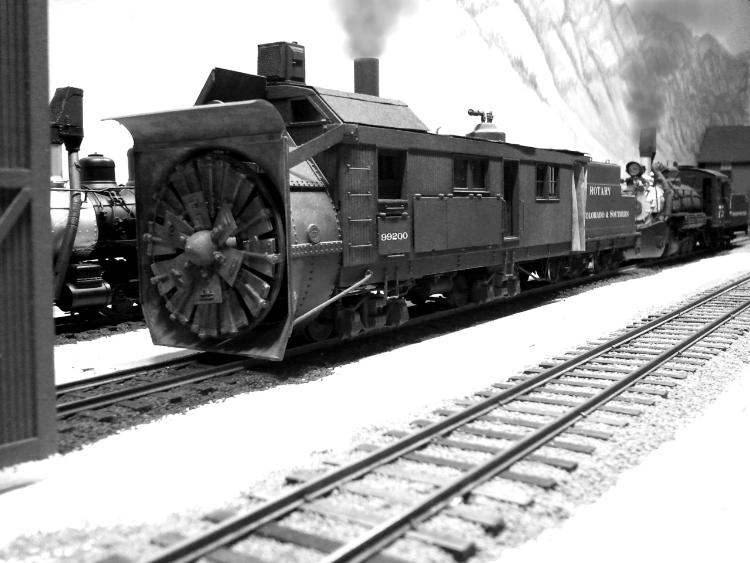 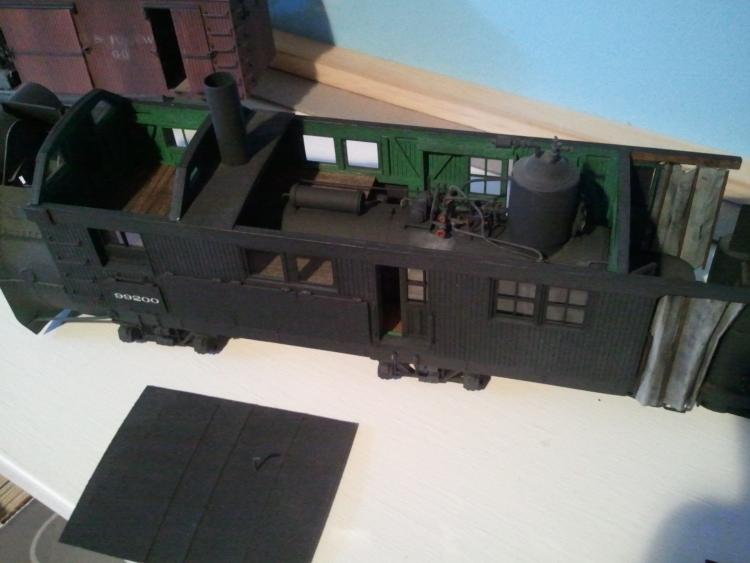
|
|
Administrator
|
Here are a few more:
 Yes, #99200 is an Enginehouse Princess, but every so often, she does get out on the line, and it's usually memorable. 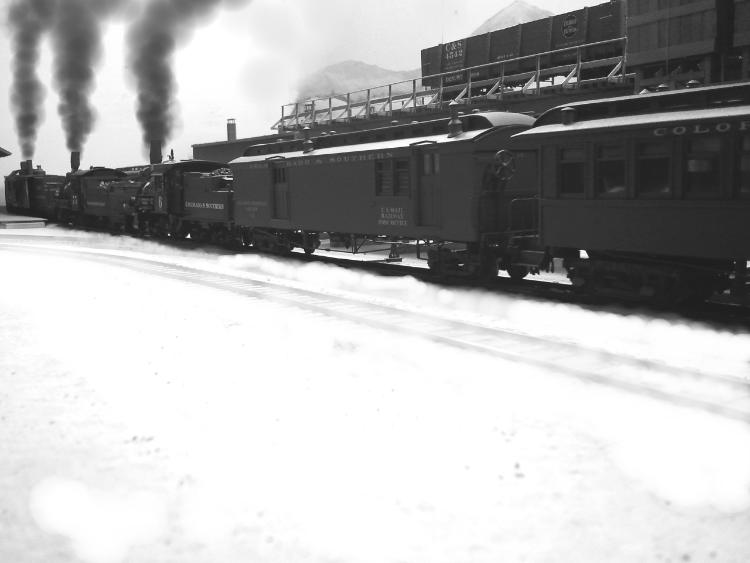 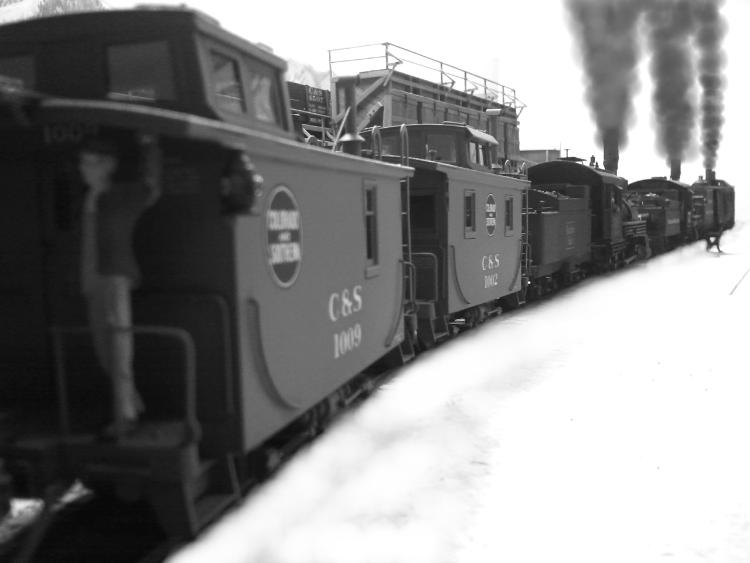
|
|
This post was updated on .
In reply to this post by Robert McFarland
Robert asked an interesting question:
Got a non-model question.When did the South Park first start using flangers? I think Todd posted this high-res enlargement of a drag flanger lettered for the DL&G at Hancock during the 1890s: 
I've never seen a photo of a drag flanger lettered for the DSP&P. When did they first arrive on the MOW roster? Perhaps Ron Rudneck or Ken Martin have info on this topic. But what about the pilot mounted flangers, suspended under the pilot deck ahead of the lead truck -- when did they first appear? I've looked through my photo collections and the earliest photo that I can find is this one: 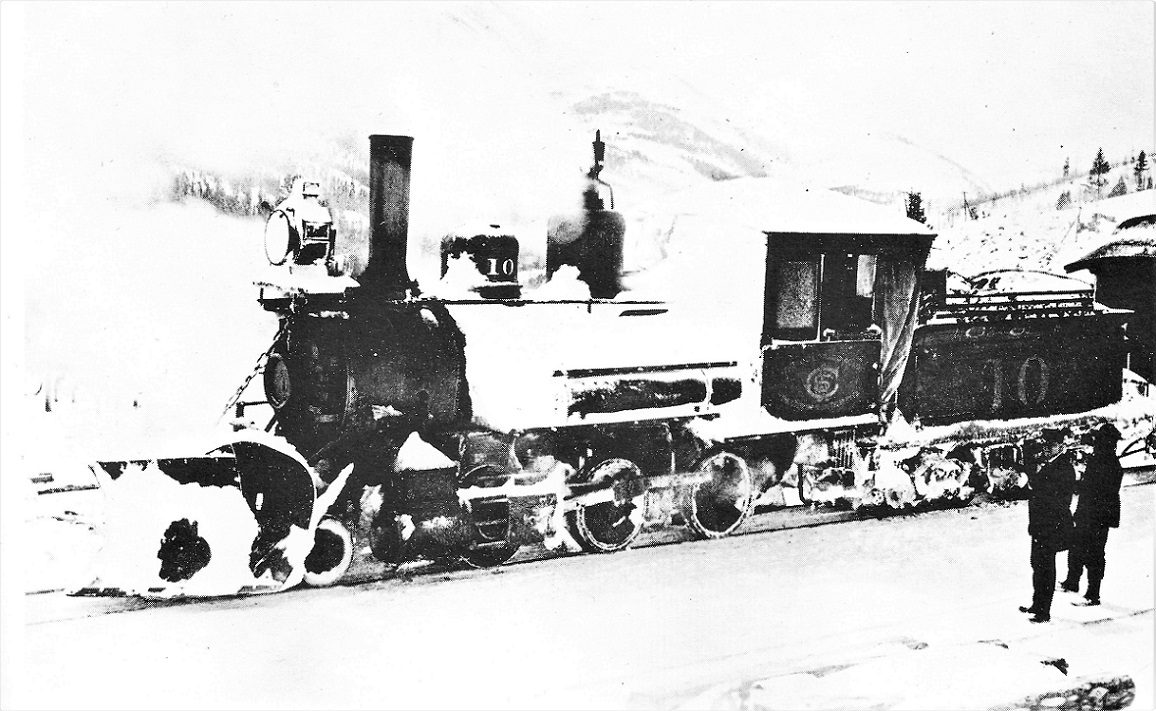 Colorado Railroad Museum collection, in CRA 12 This winter photo is dated to early 1901, at Halfway, on Boreas Pass. C&S 4 and 6 were the first two Cooke 2-6-0's to be rebuilt, in July of 1900. C&S 10 followed in August of 1900, so number 10 is about 6 months "old" in this photo. An early version of the "butterfly" pilot plow is in use. The pilot flanger lift mechanism is clearly visible just ahead of the number plate. This may also be the earliest photo showing cab curtains on a C&S locomotive. C&S number 4 did not have a pilot flanger mounted on it's "re-builders photo" of July 1900:  But the mechanism is clearly visible in this photo of number 4 at Dickey, about 1903, after automatic couplers were installed:  Lad Arend Collection, in CRA 12. No flanger blades are in evidence and the actuator rod from the running board mounted air cylinder is not connected. I haven't found evidence of pilot mounted flangers on any other early C&S locomotives except this summertime view of number 71 at Pitkin, again about 1903: 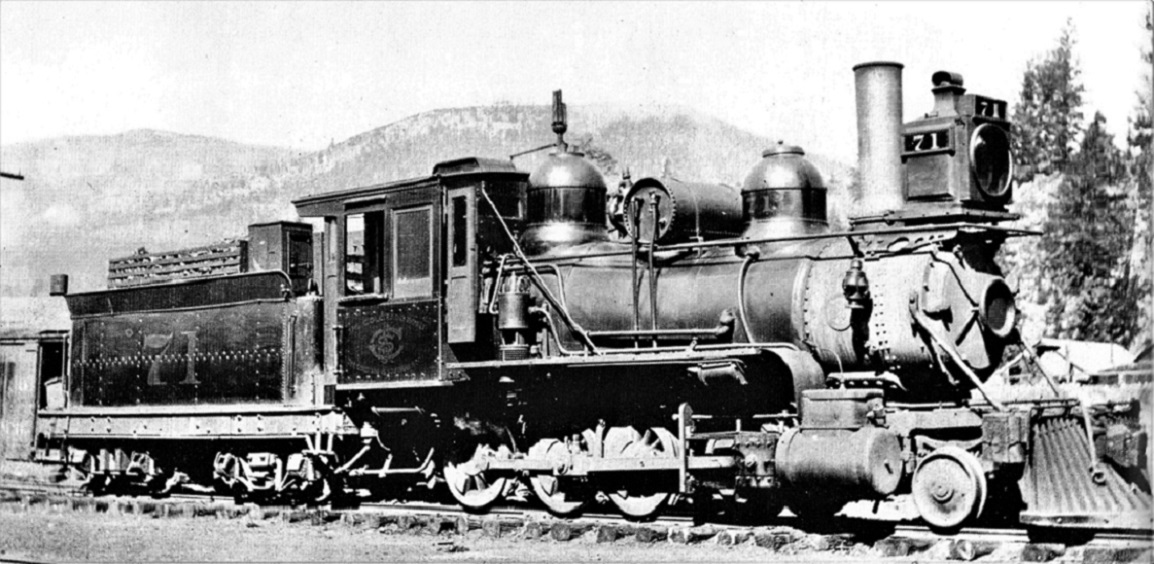 Mac Poor's DSP&P Memorial Edition No flanger blades in front of the pilot wheels, no lift mechanism visible, but . . . Hey, it's summertime! The air cylinder for lifting the flanger is clearly visible under the running board, as is the air line. Anyone know of any earlier photos of a pilot flanger, in the McConnell stack days??
Jim Courtney
Poulsbo, WA |
|
Robert asked an interesting question:
Got a non-model question.When did the South Park first start using flangers? The answer is 1885, at the same time the D&RG built theirs. DSP&P #05 ~#08 by the UP Shops and I got that from the Crain's pages that Robert often mentions. Hence my somewhat facetious answer.  
UpSideDownC
in New Zealand |
|
Some absolutely beautiful work gents and a very interesting discussion on the flangers, as well!
|
|
Thanks for the link to Crain's Pages, Chris. Interesting information.
I never found a reference for the flanger build dates until now. My copy of the folio drawings of the flangers (also posted in the "Files" section) don't have a builder or build date listed. Makes sense that both the D&RG and DSP&P (UP) would come up with these devices at the same time. The collective railroad industry of the west, adopting new pieces of equipment at the same time as a solution to common problems. 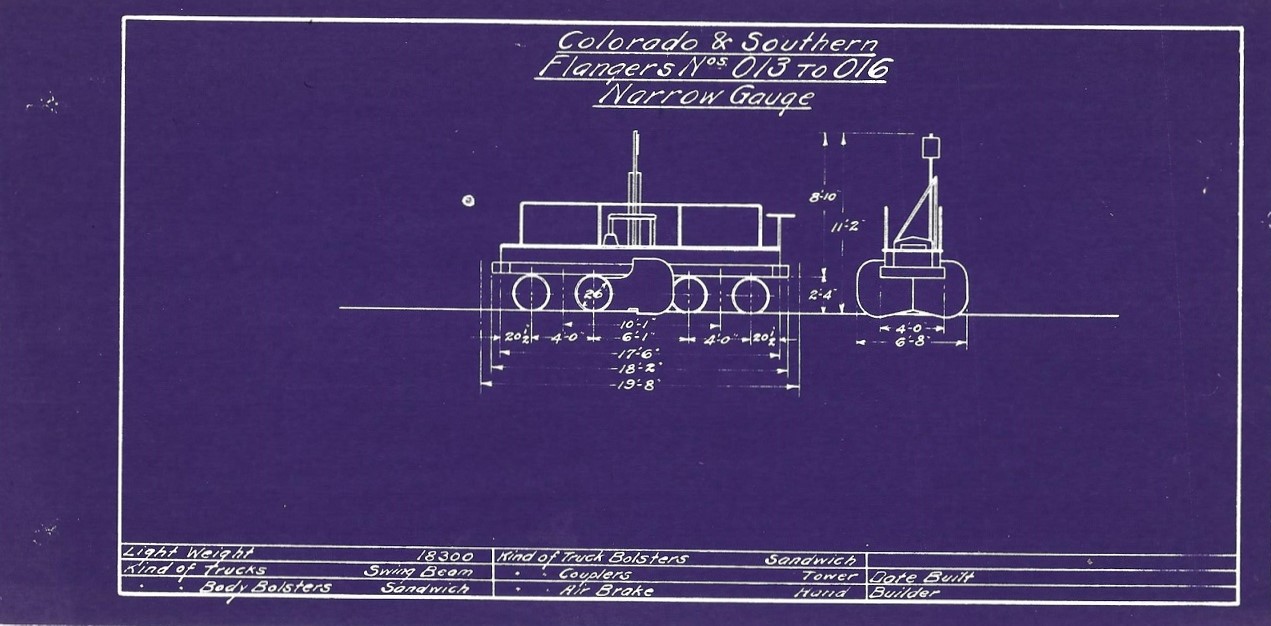 OK, now for a silly question.  Both Don and Mike have painted their C&S rotaries and tenders black. I've always labored under the delusion that these beasts were painted like the RGS machine: freight car red body and tender, black underframes and roof, black rotary housing and blades. Is there a color photo or a reference that I've missed that says black is right??
Jim Courtney
Poulsbo, WA |
|
Administrator
|
Hi Jim:
At the time my model was built, I was still actively spending time as frequently as was possible with retired West End fireman Doug Schnarbush, who answered as many of the countless questions that I, or we, (Todd Hackett was along for many if not most of these visits) as he could. In 1986, I was working on the Rotary and Doug was able to fill in several details. Among them was that both the Rotary and it's tender were painted black, same as the locomotives. He also helped by informing me that the blade wheel and interior of the cowling were a silver gray coating of Graphite and oil, the same goop that was used on fireboxes and smoke boxes of the locomotives. This not only protected the iron and steel from rust, but also served to help prevent snow and ice buildup in the freezing winter conditions. Doug worked for the C&S from 1927 to abandonment on the West End between Como and Leadville, so everything he knew fit my timeframe of primary interest. I think it is very likely and perhaps even probable that the Rotarys were painted red in earlier times. But by 1927 they were black from Doug's account, and that was sure good enough for me. On another interesting note, photos taken at the scene of the fire at the Como Roundhouse were extremely helpful to guide me through the boiler detailing and mechanical aspects of the engine on the rotary after the entire body was burned away in 1935. When the 99200 was returned to service, it had a completely different housing and a sloped tender. Never looked the same again. There are a few post-1935 details applied to various items in my roster, but most are locked in on pre-fire 1935. Including the box headlight on #72, which was also destroyed in the fire. My #60, an exception, carries a butterfly plow, a passenger style 42" (high) plow, which was put on out of necessity to replace the plow on #73 until it could be recovered from the wreck site on Boreas in January 1936. Someone, may have been Don, was wondering about the possibility of a plow having ever been used on one of the leased C-19's, I don't think that ever happened. |
|
This post was updated on .
Well there you go, just the sort of info that needs to be recorded here, for future C&S enthusiasts and modelers!
 All of you folks who recorded the oral histories of the men who ran our favorite little railroad, please post your information / factoids here on the Discussion Forum, as a thread, as you think of them. Any information about the C&S narrow gauge is priceless. And I'll keep doing my part by asking questions out of ignorance, as I think of them. 
Jim Courtney
Poulsbo, WA |
|
In reply to this post by Don Pacetti
The 099 in HOn3
 
|
|
The correct pre 1962 tenders for D&RGW Rotary OM in Sn3, Basically ready for paint and in sub assemblies until final assembly.
   
|
|
I’m soooo glad I started this thread...beautiful stuff my friends!
|
|
In reply to this post by Jim Courtney
Jim, Don, others...
 Rotary colour I doubt would regress from Red to Black in the late era, a colour photo by Bob Richardson in Chasing Trains, Burlington trademark #641 w/Red plow pushing the C&S lettered Rotary, and in Mineral Belt V-II, a Digerness photo with a Chinese Red SD-9 taken at Leadville, both show Rotary Black with Red inside the shroud and Blades. A. F. PRIEST.FLANGER.No. 467,349. Patented Jan. 19,1892. The Priest Flangers fitted to C&S ng locos are detailed in CRRA#12 South Park Line, pg 156/7, it gives listings of such however it isn't written chronologically nor consistently and somewhat contradictory. prior to 1902, two n.g. locos 1903 four more n.g. locos 1908/09 #59 (taken off Rotary) 1909 two Passenger, seven Freight plus Rotary 011 1910 #4, #6, Leadville district, #38+#52, Gunnison district #59, #63, #64, #67, #71 and #73. and Rotary. As for Flangers, Cornelius Hauck also wrote in CRRA#12 South Park Line, In March,1887 the DSP&P received two new Flanger cars, one with 26" wheels, the other with 30" wheels, costing $856.90 and $893.02 each. However Derrell Poole wrote in Narrow Gauge Pictorial V-viii on pg 14 In June 1885,.....the first narrow gauge flanger cars were located in Como...numbered five and six. Two more flanger cars were built in 1887. The DL&G numbered the class 03, 04, 06 and 07.... By March,1900, the C&S had renumbered them 07, 08, 09 and 010. In 1906 ...renumbered to 02, 03, 07 and 08 with the last cars remaining the same. In 1909, the Colorado and Southern numbered the cars 013, 0124, 015 and 016. There is more dealing with assignments.(but its very late here)
UpSideDownC
in New Zealand |
«
Return to C&Sng Discussion Forum
|
1 view|%1 views
| Free forum by Nabble | Edit this page |

